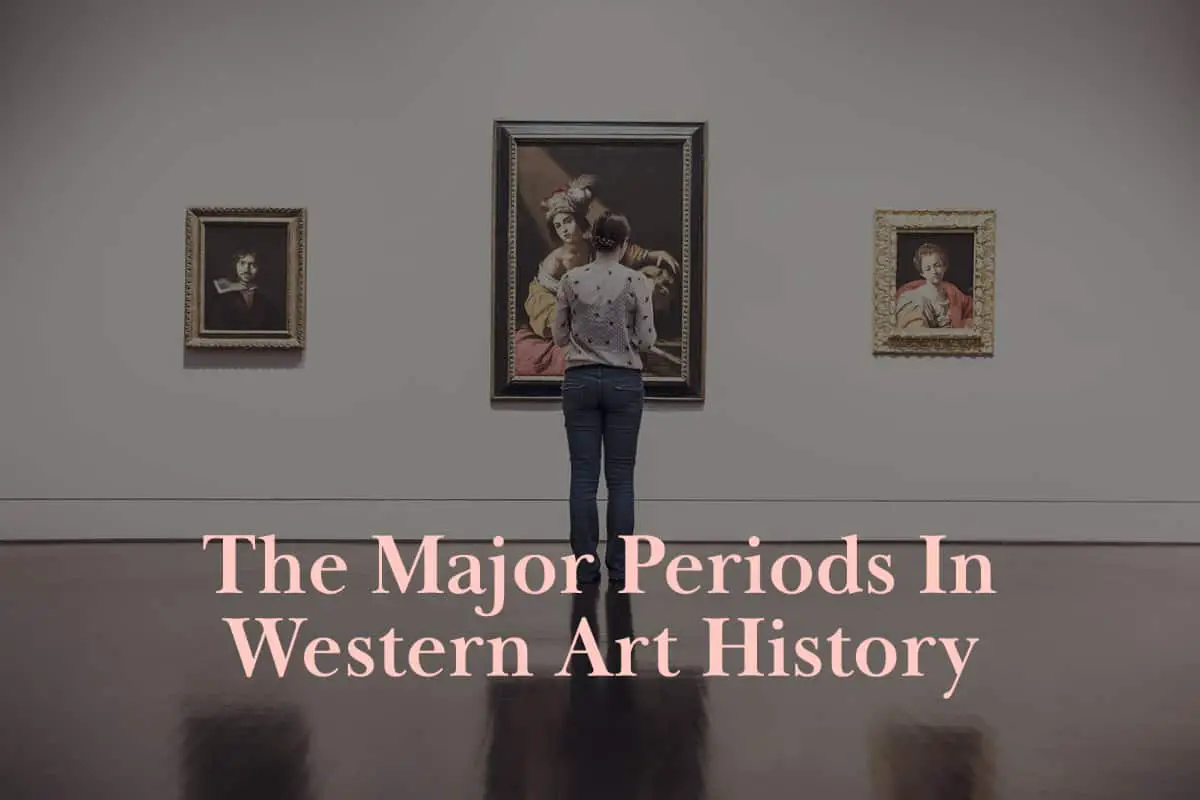When I look at the major periods of Western Art History, the one thing that stands out is that artists have been creating art for a long time. Western Artists have been creating art for literally thousands and thousands of years.
The major Western art history periods are defined as Prehistoric Art, Ancient Art, Medieval Art, the Renaissance, Mannerism, Baroque, Rococo, Neoclassicism, Romanticism, Realism, Art Nouveau, Impressionism, Post-Impressionism, Fauvism, Expressionism, Cubism, Surrealism, Abstract Expressionism, Op Art, Pop Art, Arte Povera, Minimalism, Conceptual Art and Contemporary Art.
Table of Contents
- The Major 24 Periods of Western Art History
- The Art History Period and Western Art Movements
- Prehistoric Art Movement
- Ancient Art Movement
- Medieval Art Movement
- Renaissance Art Movement
- Mannerism (Late Renaissance) Art Movement
- Baroque Art Movement
- Rococo (Late Baroque) Art Movement
- Neoclassicism Art Movement
- Romanticism Art Movement
- Realism (Naturalism) Art Movement
- Art Nouveau Art Movement
- Impressionism Art Movement
- Post – Impressionism Art Movement
- Fauvism Art Movement
- Expressionism Art Movement
- Cubism Art Movement
- Surrealism Art Movement
- Abstract Expressionism Art Movement
- Op Art (Optical Art) Art Movement
- Pop Art Art Movement
- Arte Povera Art Movement
- Minimalist Art Movement
- Conceptual Art (Conceptualism) Art Movement
- Contemporary Art Art Movement
- 11 Reasons Why Studying Art Movements is Essential for Truly Understanding Art and Artists
- Frequently Asked Questions About Western Art Movements
- Related Concept
The Major 24 Periods of Western Art History
If you are interested in understanding the fascinating world of Western art history, you will quickly discover 24 fundamental timelines. We will provide a comprehensive overview of the various artistic movements and periods that have shaped the art world as we know it today.
Each of these 24 primary Western art history period timelines covers a different type of art and a specific timeline or era.
Below is a chart showing the Western Art history periods and the years each covers.
| Art History Period | Years |
| Prehistoric Art | -40,000 – 4,000 B.C. |
| Ancient Art | 30,000 B.C. – A.D. 400 |
| Medieval Art | A.D. 500 – A.D. 1400 |
| Renaissance | 1400 – 1600 |
| Mannerism | 1527 – 1580 |
| Baroque | 1600 – 1750 |
| Rococo | 1699- 1780 |
| Neoclassicism | 1750 – 1850 |
| Romanticism | 1780 – 1850 |
| Realism | 1848 – 1900 |
| Art Nouveau | 1890 – 1910 |
| Impressionism | 1865-1885 |
| Post – Impressionism | 1885-1910 |
| Fauvism | 1904-1908 |
| Expressionism | 1905- 1920 |
| Cubism | 1907 – 1914 |
| Surrealism | 1916-1950 |
| Abstract Expressionism | 1940s – 1960s |
| Op Art | 1950s – 1960s |
| Pop Art | 1950s – 1960s |
| Arte Povera | 1960s – 1970s |
| Minimalism | 1960s – 1970s |
| Conceptual Art | 1960s – 1970s |
| Contemporary Art | 1970 – present |
The Art History Period and Western Art Movements
The art world is a vast and complex realm that encompasses a wide range of styles, movements, and periods. Understanding art history is essential for anyone who wishes to gain a deeper appreciation for the art they encounter.
We will explore the major art history periods and Western art movements, taking a closer look at the significant artists, styles, and themes that have shaped the course of art history. Each Western Art History period is a bit different from the other.
Below is a summary of these Western Art History timelines and periods.
Prehistoric Art Movement
Prehistoric art covers the period from 40,000 – 4,000 B.C. This period is so long that it covers all art forms until a defined culture or civilization. Many do not consider this Western art, but we include it here as cavemen’s drawings were also found in Europe.
Prehistoric art also includes art forms such as writing, recordkeeping, or art found on cave walls. Cavemen drawings are an art form that dates back to prehistoric art and is found worldwide.
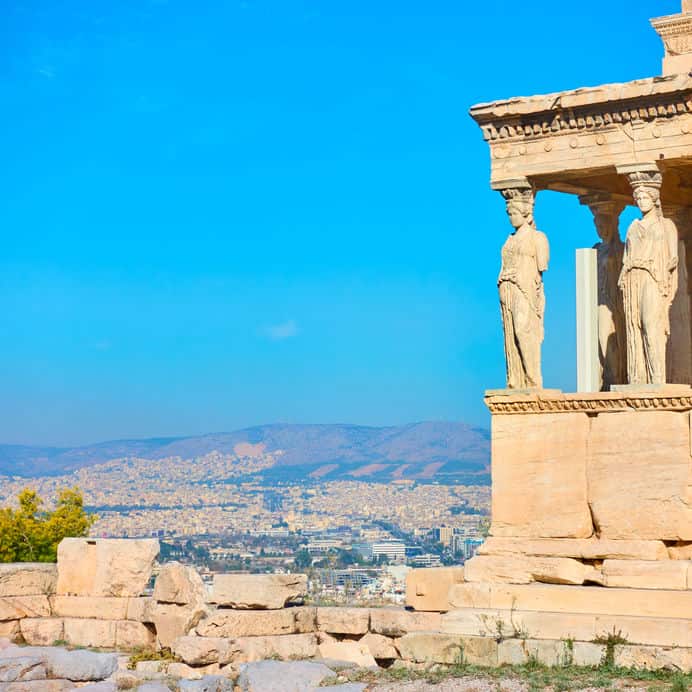
Ancient Art Movement
Like prehistoric art, the Ancient Arts also cover a significant period from 30,000 B.C. – A.D. 400. Ancient art is found in many parts of the world.
Some of the more famous Western Classical Arts are the Ancient Western Classical Arts of the Minoans, Greeks, and Romans. You can discover more about this art period by reading our blog What Are The Ancient Western Classical Arts? A Quick Guide by clicking here.
Medieval Art Movement
Medieval Art covers the period from A.D. 500 – A.D. 1400; western medieval art covers about 1,000 years throughout Europe. This art time frame covers a vast array of art.
Like many other art timelines, medieval art has been broken down into other ones such as Early Christian art, Migration Period art, Byzantine art, Insular art, Pre-Romanesque, Romanesque, and Gothic art. There is also Anglo-Saxon art and Viking Art, which fit into the Western Medieval art realm.
To learn more about the Middle Ages or Medieval art, read When Was The Middles Ages? Art In The Middle Ages by clicking here.
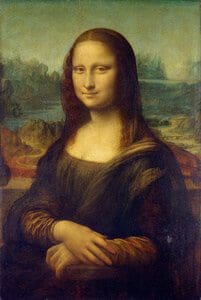
Renaissance Art Movement
Renaissance Art is European history’s painting, sculpture, and decorative arts from about 1400 to 1600. Also parallel to the artistic movement was the advancement in philosophy, literature, music, science, and technology.
Renaissance art took its foundation from classical antiquity but transformed it by applying the current knowledge of the day. The Renaissance art period is significant as it marks Europe’s transition from medieval art to the early modern art age.
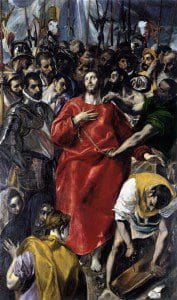
Mannerism (Late Renaissance) Art Movement
The Mannerism art movement took place from 1527 – 1580. This period of art is also known as the late Renaissance.
Mannerism art exaggerated the qualities of proportion, balance, and ideal beauty. For example, an artist may make a neck longer than it originally was. Thus, the mannerism art period is known for its intellectual sophistication and some of its artificial qualities.
Baroque Art Movement
The Baroque period of art is from 1600 – 1750. The Baroque style includes architecture, music, dancing, painting, sculpture, and other arts. Baroque art flourished in Europe. It began in Rome but rapidly spread into France, northern Italy, Spain, Portugal, and Europe.
The baroque style used contrast, movements, exuberant details, deep colors, grandeur, and surprise for the viewer to feel awe. It is also known for its excessive use of ornamentation.
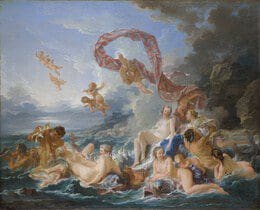
Rococo (Late Baroque) Art Movement
The Rococo period of art is from 1699- 1780. It is also known as the Late Baroque period of art.
The Rococo or Late Baroque art movement is an exceptionally ornamental and theatrical style of architecture, art, and decoration. This art movement combines asymmetry, scrolling curves, gliding, and pastel colors— sculpture molding and trompe l’oeil frescoes.
Like the Baroque art movement, the element of surprise was necessary, along with motion and drama. This is why many consider Rococo to be the final expression of the Baroque movement of art.
Neoclassicism Art Movement
Neoclassicism was practiced for about 100 years, from 1750 to 1850. It was a movement that started in Rome and spread around Europe.
The Neoclassicism movement coincided with the 18th Century Age of Enlightenment. Neoclassicism took a lot of its inspiration from the ancient arts of Rome and Greece. For example, Neoclassical architecture was based on simplicity and symmetry.
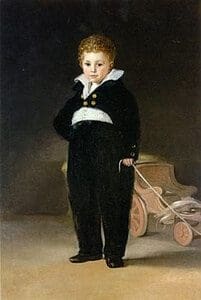
Romanticism Art Movement
The Romanticism art movement was from 1780 – 1850. It ran parallel together with the Neoclassicism art movement. It is also known as the Romantic Era.
The Romanticism art movement originated in Europe as an artistic, literary, musical, and intellectual movement. An emphasis on emotion and individualism characterized it. It took its inspiration from the Medieval art period, not classical art. Art was a reaction to the Industrial Revolution and the social aspects of its day.
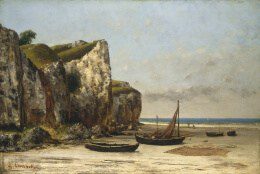
Realism (Naturalism) Art Movement
Realism art was from 1848 – 1900. It is sometimes also referred to as naturalism.
Realism art is about representing the subject matter truthfully and without any artificiality. The artist was to avoid speculative fiction or any supernatural elements. It is about painting what you see as real as possible.
Art Nouveau Art Movement
Art Nouveau was from 1890 – 1910. Art Nouveau was an art form that caught on throughout Europe.
Art Nouveau’s primary objective was to break down the traditional distinction between fine art and applied arts. Because of this, Art Nouveau was most widely used in interior design, graphic arts, furniture, glass art, textiles, ceramics, jewelry, and metalwork.
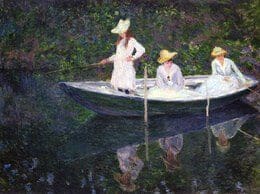
Impressionism Art Movement
Impressionism was from 1865-1885. The impressionist art movement started in France but then spread to other places. Impressionist artists faced harsh criticism from the established art community in France.
Impressionism was characterized by relatively small, thin, visible brushstrokes with an open composition. The impressionist emphasized the depiction of light and its changing qualities, i.e., how light would change with time.
To discover more about the Impressionism art movement, read our blog Why Was Impressionism Art at First Rejected? by clicking here.
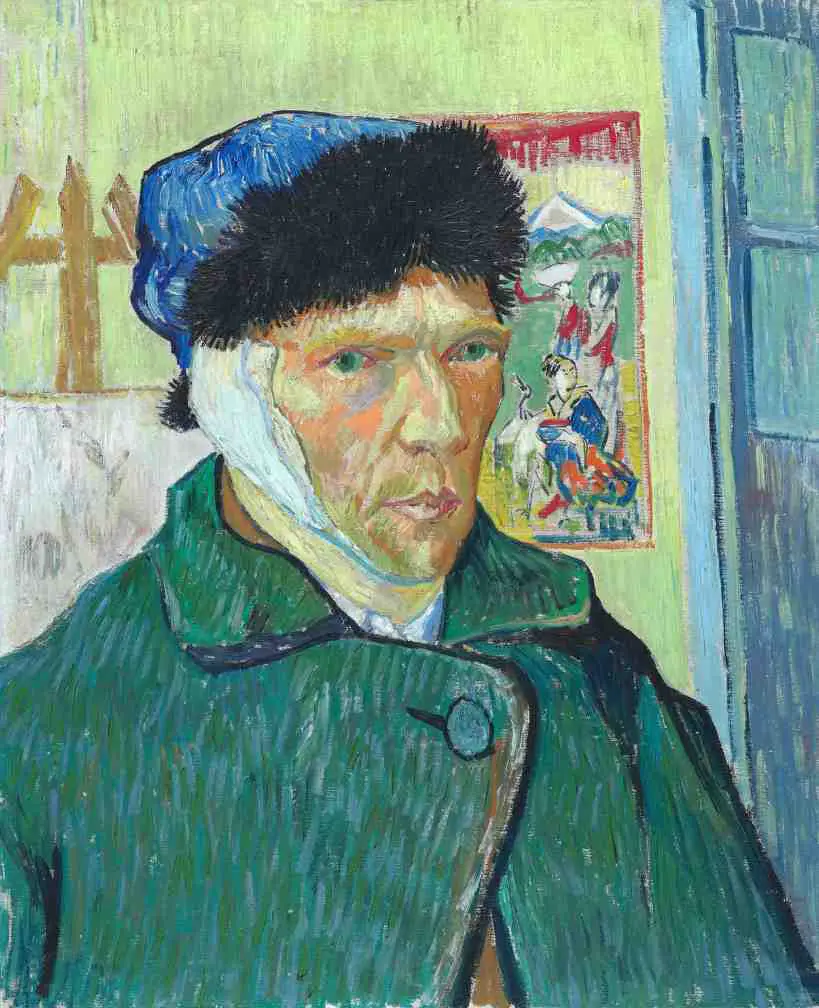
Post – Impressionism Art Movement
The Post-Impressionism art movement was from 1885-1910. It was a predominantly French art movement.
Post-Impressionism was a reaction against the Impressionists’ concern for the naturalistic depiction of light and color. Post-impressionism extended impressionism while rejecting many of its limitations.
They continued using vivid colors, thick application of paints, and real-life subject matters. They also used geometric forms or distorted forms for an added effect and used unnatural or arbitrary colors.
One of our favorite post-impressionism artists is Vincent Van Gogh. You can learn more about Vincent Van Gogh by reading Why Vincent Van Gogh Is Such A Famous Painter by clicking here.
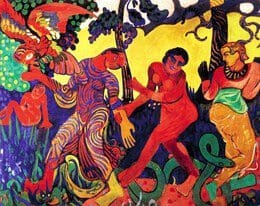
Fauvism Art Movement
Fauvism was an art movement from 1904-1908. Fauvism is also known as les Fauves, French for “wild beasts.” It was a short-lived movement as it only had three exhibitions.
The Fauvism painters used wild brushstrokes and strident colors. At the same time, their subject matter had a high degree of simplification or abstraction.
Expressionism Art Movement
The expressionism art movement was from 1905- 1920. This movement started in Germany.
The Expressionism art movement encompassed both poetry and painting. The Expressionists sought to represent the world from a subjective perspective. In their view, they distorted the world for an emotional effect; their goal was to evoke feelings, ideas, and moods. Expressionists sought to express an emotional experience rather than physical reality.
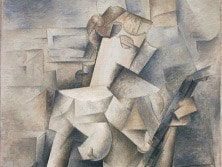
Cubism Art Movement
The Cubism art movement was from 1907 – 1914. It was an avant-garde movement that was considered revolutionary for its time.
In the Cubism art movement, the objects were broken up and reassembled in an abstract form. Instead of depicting an object from a single viewpoint, they would show it from multiple perspectives.
To learn more about the Cubism art movement, you can read our blog on The Cubism Art Movement, What You Need to Know by clicking here.
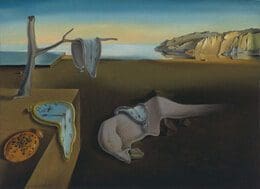
Surrealism Art Movement
The Surrealist art movement was from 1916 to 1950. Surrealism was a cultural movement that started in Europe after World War I.
Surrealism is about the contradiction between dreams and reality – a kind of super-reality of surreality. Artists would paint unnerving scenes with photographic precision while they created strange creatures from everyday objects. They believed this allowed the unconscious to express itself.
To discover more about Surrealism, you can read our blog Was the Mexican Artist Frida Kahlo (1907-1954) A Surrealism Artist? by clicking here.
Abstract Expressionism Art Movement
The Abstract Expressionism art movement is from the 1940s to – the 1960s. Abstract Expressionism was a post-World War II method of painting that started in New York City.
Abstract Expressionism was the term that was applied to a new form of abstract art. Gestural brushstrokes and very spontaneous movements often characterize Abstract Expressionism art.
There were two main groups in abstract expressionism: 1) the action painters who worked in a spontaneously improvised manner on the canvas and 2) the color field painters who painted simple compositions with one color that filled a large part of the canvas.
One of the developers of the Abstract Expressionism art movement was Jackson Pollock. You can learn more about him by reading our blog Who is the American artist Jackson Pollock (1912-1956)? by clicking here.
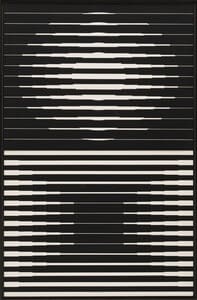
Op Art (Optical Art) Art Movement
Op Art, short for optical art, had its significant era in the 11950s to 1960s. The Time Magazine coined the term Op Art in 1964.
Many Op Art pieces are created in black and white; sometimes, they have a bit of color. Op Art gives the viewers the impression of movement, hidden images, flashing, vibrant patterns, swelling, or the canvas’s warping.
Learn more about Op Art by reading our blog What Are The Key Characteristics of Op Art? by clicking here.
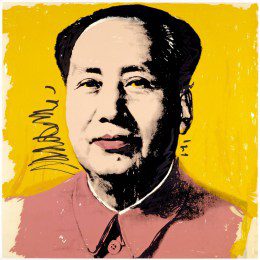
Pop Art Art Movement
Pop Art is an art movement that emerged in the United States and the United Kingdom in the 1950s and 1960s.
Pop art uses images from popular and mass culture. One of the purposes of Pop Art was to use these images in an ironic or kitschy way. Many of the Pop Art images were imitated from popular images used in advertising.
To discover more about Pop Art, you can read our blog What Is Pop Art In Simple Terms? by clicking here.
Arte Povera Art Movement
The Arte Povera art movement took place in the 1960s and 1970s. It started in major cities throughout Italy, with Turin, Italy, being a significant location.
The words Arte Povera mean “poor art.’ This was about the artists using a wide range of materials besides traditional painting methods with oils on canvas. The art movement was considered radical as artists explored unconventional processes and non-traditional ways to use everyday materials. The artist would use everyday objects such as soil, rags, and twigs, considered throw-away items.
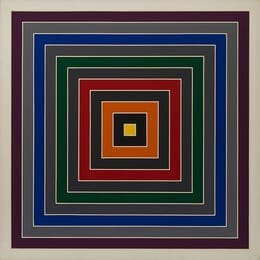
Minimalist Art Movement
The Minimalist art movement was in the 1960s and 1970s. Minimalism art was also called minimal, literalist, and ABC art.
This Minimalist art movement is most strongly associated with the visual arts in America. The Minimalist art scene encompassed art and design, visual art, and music. Some of the minimalist artwork was composed of simple geographic shapes, usually based on the square and rectangle. Minimalist artists felt that art should have its reality and not be an imitation of something else.
Conceptual Art (Conceptualism) Art Movement
The Conceptual art movement took place in the 1960s and 1970s. Conceptual art is also known as Conceptualism.
Conceptual art believes that the concept behind the artwork is more important than the finished artwork or object. A Conceptual artist will look at an idea and then use the most appropriate material to get his idea across. This could be anything from photography- to performance – to a written description. Some conceptual artists would use “found” objects to express their ideas. For the Conceptual artist, there is no single form, style, or material for the artwork.
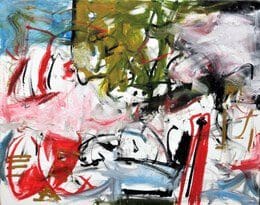
Contemporary Art Art Movement
Contemporary Art is started in the 1970s; it is a broad term given to today’s art.
Contemporary artwork is the art that reflects upon our globally connected, culturally diverse world that is rich with technology. At the same time, Contemporary art usually reflects upon the artist’s culture, family, community, and nationality.
Contemporary art uses a dynamic combination of materials, concepts, methods, and subjects. Contemporary Art continues to change and evolve as the world also continues to change and grow.
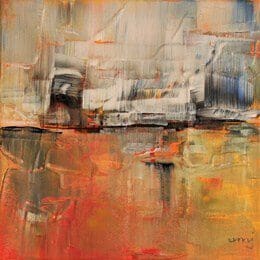
When you look at this art timeline, one thing that stands out is that art and artists have made the world more beautiful and exciting for a very long time. Art has been around since the beginning of time. For any artist looking to explore a form of art, know that you’re not alone. There have been many who have come before you.
11 Reasons Why Studying Art Movements is Essential for Truly Understanding Art and Artists
Art movements, like the pages of a history book, provide invaluable insights into the creative evolution of society. These movements serve as milestones, mapping out the progression of art through time. For anyone keen on delving deep into the world of art, understanding art movements is not just beneficial but essential.
Here are 11 reasons that I see why everyone should study art movements to understand artists and art.
- Historical Context: Art movements are products of their times. Studying them gives us insights into the socio-political and cultural conditions that influenced artists. For instance, the Renaissance mirrored the revival of interest in classical knowledge, while Dadaism was a response to the horrors of World War I.
- Evolution of Techniques: Each movement brings new methods, materials, and techniques. From the chiaroscuro of the Renaissance to the pointillism of Neo-Impressionism, understanding these techniques enriches our appreciation of the artwork.
- Appreciation of Individual Artists: Within each movement, individual artists bring their unique vision and interpretation. By understanding a movement, we can better appreciate the nuances of each artist’s work and the ways they either adhered to or diverged from the movement’s principles.
- Decoding Symbolism: Art movements often carry specific symbols, motifs, or themes. Understanding these can unlock deeper meanings in artworks, allowing viewers to connect more profoundly with the piece.
- Cultural Exchange and Influence: Movements like Japonism or Orientalism highlight the exchange and fascination between different cultures. They demonstrate how art transcends borders and reflects global interconnectedness.
- Shifts in Aesthetics: Art movements outline the ever-changing standards of beauty and aesthetics. From the Classical era’s idealized forms to Cubism’s abstract shapes, these shifts are pivotal in understanding how beauty is perceived.
- Art as Social Commentary: Many movements, like the Social Realism of the 20th century, act as social critiques, highlighting societal issues and advocating for change. Understanding these movements gives depth to the artwork, revealing the messages the artists hoped to convey.
- Economic and Technological Influences: Mass media and consumerism heavily influenced Movements like Pop Art. Studying them provides insights into how technological advancements and economic factors shape artistic expression.
- Philosophical Underpinnings: Some movements, such as Abstract Expressionism or Surrealism, are deeply intertwined with philosophical ideas. Delving into these philosophies enriches one’s understanding and enjoyment of the artworks they influenced.
- Understanding Contemporary Art: Modern and contemporary art often draw from or react against earlier movements. By understanding the past, we can better comprehend the dialogues and debates taking place in the art of our times.
- Personal Growth and Empathy: Engaging with various art movements allows individuals to see the world through different lenses, fostering empathy and broadening horizons. It’s not just about understanding art but also about enriching one’s worldview.
Art movements are like the chapters of a vast and intricate story. Each one offers a unique perspective, a different lens to view the world, and a new way to interpret life. To truly appreciate the depth and breadth of art, one must dive into the waves of these movements and let them shape one’s understanding of the artistic universe.
Anita Louise Art is dedicated to art education, great artists, and inspiring others to find and create their art. We love art that uplifts and inspires. #ArtToMakeYouSmile! #ArtToMakeYouHappy!
If you are interested in seeing any of my art, you can find out more by clicking here. If you are interested in what inspires me and my paintings, you can discover more by clicking here.
We have a free newsletter and would love you to be part of our community; you can subscribe to the newsletter by clicking here. If you have any questions, I would be happy to talk to you. You can reach me, Anita, by clicking here.
Subscribe to our Anita Louise Art YouTube Channel with great videos and information by clicking here.
Join us for our podcast “5 Minutes With Art.” Spend 5 minutes a week with us to discover and learn about great art and artists. You can find out more about our podcast by clicking here.
Frequently Asked Questions About Western Art Movements
What is Western Art?
Western art refers to the art produced in the Western world, including Europe and North America, from ancient times to the present.
What is Impressionism?
Impressionism is an art movement that originated in France in the late 19th century. It is characterized by its emphasis on capturing the fleeting effects of light and color in outdoor scenes.
What is Post-Impressionism?
Post-Impressionism is an art movement that emerged in the late 19th century as a reaction against Impressionism. It includes artists such as Vincent van Gogh and Paul Cézanne, who developed their distinctive styles.
What is Expressionism?
Expressionism is an art movement that originated in Germany in the early 20th century and is characterized by its emphasis on conveying emotional or psychological states through distorted or exaggerated forms.
What is Cubism?
Cubism is an art movement that originated in France in the early 20th century and is characterized by its use of geometric shapes and multiple perspectives to depict objects.
What is Surrealism?
Surrealism is an art movement that originated in France in the 1920s and is characterized by its use of dreamlike imagery and unconventional juxtapositions to explore the workings of the unconscious mind.
What is Abstract Expressionism?
Abstract Expressionism is an art movement that emerged in the United States in the 1940s and is characterized by its use of large, gestural brushstrokes and a focus on the physical act of painting.
What is Minimalism?
Minimalism is an art movement that emerged in the United States in the 1960s. It is characterized by its use of simple, geometric forms and a focus on the artwork’s materiality.
What is Contemporary Art?
Contemporary art refers to the art produced in the present day and includes various styles and movements.
What is the significance of Western art movements?
Western art movements have significantly shaped the course of art history, influencing artistic styles and practices worldwide. They reflect their time’s cultural, social, and political contexts and continue to be studied and appreciated today.
Why are art movements important?
Art movements are important because they provide a way to organize and understand the development of art over time. They allow us to see how artists responded to their time’s social, political, and cultural contexts and how they influenced each other’s work.
How do art movements impact society?
Art movements significantly impact society, as they often reflect and critique the values, beliefs, and ideas of their time. They can also inspire social change by challenging dominant narratives and promoting new ways of thinking.
Why do art movements continue to be relevant today?
Art movements remain relevant today because they provide a framework for understanding contemporary art and its connection to the past. They also help us appreciate the diversity of artistic styles and practices today.
How do art movements influence other forms of culture?
Art movements significantly influence other forms of culture, such as literature, music, and fashion. They can inspire new ideas and approaches and creative practitioners across different fields.
Why is it important to study art movements?
Studying art movements is important because it allows us to gain a deeper understanding of the history and evolution of art. It also helps us appreciate the diversity of artistic styles and practices and develop critical and analytical skills. Finally, it can inspire us to create our work and engage with the world in new and creative ways.
Related Concept
Can I Virtually Visit Any Art Museums?
Many of the world’s great art museums and galleries offer virtual tours of their museum or part of the museum. This is a great way to be able to see many of the world’s finest art museums right from the comfort of your home.
You can discover more by reading our blog 11 Virtual Art Museum Tours That Will Cost You Nothing by clicking here.
What is the Brigham Young University Museum of Art?
The Brigham Young University Museum of Art is a world-class art museum located in Provo, Utah. The museum exhibits artwork from many well-known artists. The Brigham Young University Museum of Art is one of the largest and best-attended art museums in the Mountain West.
You can discover more by reading our blog post The Brigham Young University Museum of Art In Provo, Utah by clicking here.

